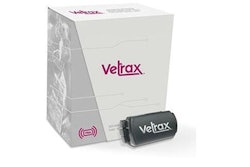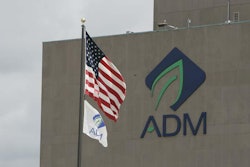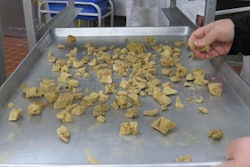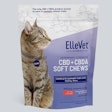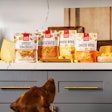
The US corn harvest from 2016 tested high in mycotoxin contamination, so US pet food manufacturers may have reason to monitor corn and distiller’s dried grains used as pet food ingredients, according to results of the latest BIOMIN Mycotoxin Survey.
In total, 387 corn samples and 79 distiller’s dried grains with solubles (DDGS) samples were sourced from across the US in 2016. A full 90 percent of corn samples and 100 percent of DDGS samples tested positive for at least one mycotoxin.
Higher risk from mycotoxins
“The mycotoxin threat was higher in 2016 than in 2015,” said Dr. Raj Murugesan, technical and marketing director of BIOMIN America. “Deoxynivalenol (DON), fumonisins (FUM) and zearalenone (ZEN) in particular present a potential risk to livestock animal production. This gives greater importance to regular monitoring of feed, crops and silages.”
Impacts on animals
The presence of mycotoxins is associated with poorer food quality, impaired animal performance and health challenges.
“Certain combinations of mycotoxins are known to have synergistic effects,” warned Dr Murugesan. “That means a magnified negative impact to animals, even at reasonably low levels.”
2016 US corn highlights
Deoxynivalenol saw slightly higher occurrence at 75 percent (72 percent in 2015) and average contamination levels at 1670 ppb (691 ppb in 2015).
Fumonisins’ prevalence reached 72 percent (52 percent in 2015) with an average contamination level of 4424 ppb.
Zearalenone became much more prevalent at 42 percent (17 percent in 2015) while the average contamination also made a jump to 412 ppb from 247 ppb in 2015.
“All three major toxins [DON, FUM, and ZEN] have an increased prevalence in US corn harvested in 2016 in comparison to 2015,” said Dr Erika Hendel, Swine Technical Manager at BIOMIN.
2016 US DDGS highlights
All 79 DDGS samples tested positive for deoxynivalenol, averaging 2681 ppb.
Fumonisins and zearalenone were very prevalent at 88 percent and 71 percent of samples, respectively.
“96 percent of DDGS samples had more than one mycotoxin present in 2016,” noted Dr Paige Gott, Ruminant Technical Manager at BIOMIN.
“Rainfall during corn’s silking period along with warmer average temperatures are likely to have contributed to greater Fusarium fungi growth,” said Dr. Murugesan. Fusarium fungi can produce several mycotoxins including deoxynivalenol, fumonisins and zearalenone.
About the survey
The annual BIOMIN Mycotoxin Survey uses advanced analytic tools on more than 16,000 samples taken from 81 countries worldwide. Over 60,000 analyses were conducted to identify the presence and potential risk posed to livestock animal production.


